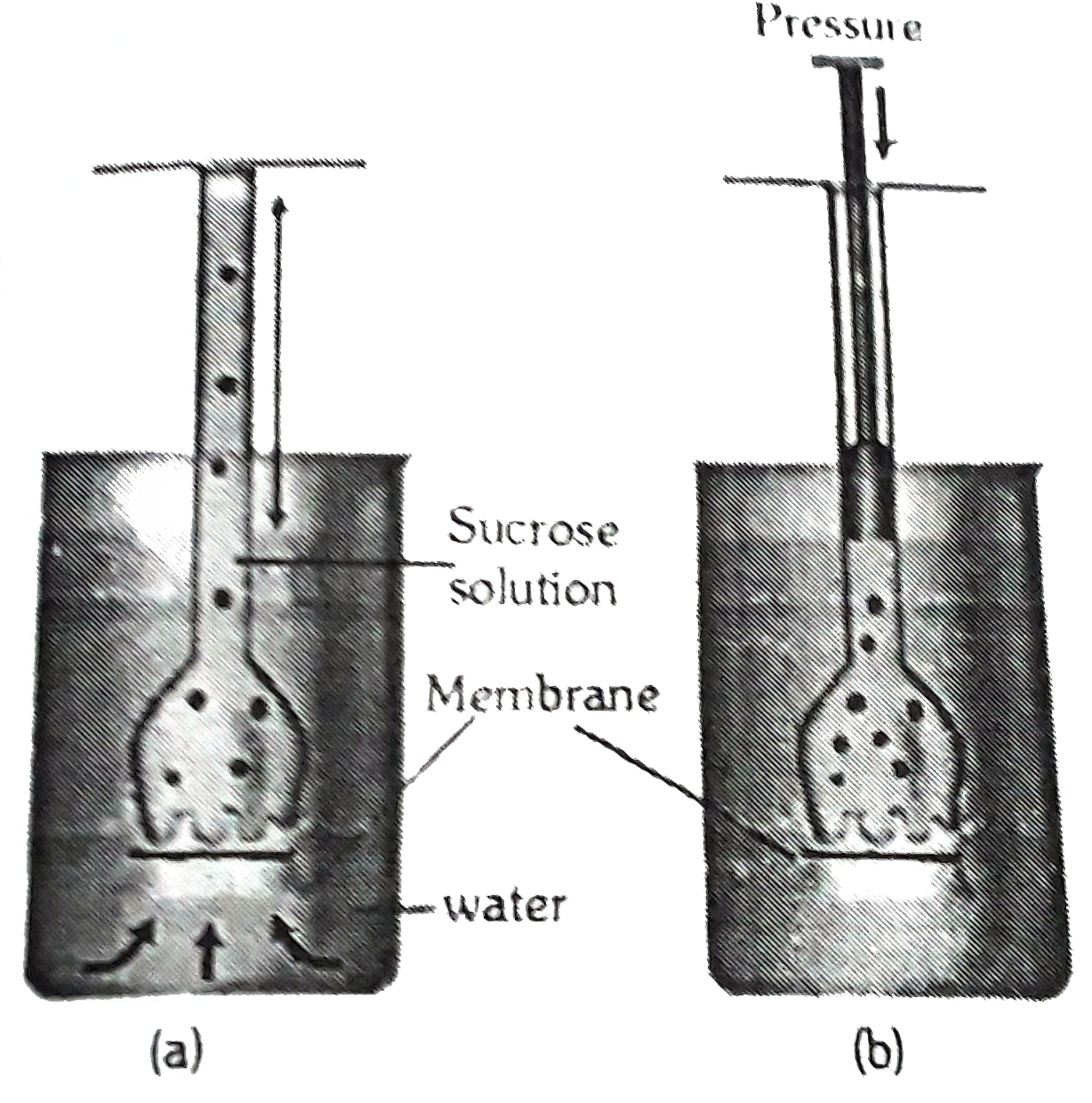What occupies the space between the cell wall and the shrunken protoplast in the plasmolysed cell ?Solution in Gujrati
When the cell (or tissue) is placed in an isotonic solution, there is no net flow of water towards the inside or outside.
If external solution balances the osmotic pressure of the cytoplasm it is said to be isotonic.
When water flows into the cell and out of the cell and are in equilibrium, the cells are said to be flaccid.
Plasmolysis : The process of plasmolysis is usually reversible.
When the cells are placed in a hypotonic solution, water diffuses into the cell causing the cytoplasm to build up a pressure against the wall, that is called turgor pressure.
The pressure exerted by the protoplasts due to entry of water against the rigid walls is called pressure potential Ψp. (ΨP s positive value)
Because of the rigidity of the cell wall, the cell does not rupture.
This turgor pressure is ultimately responsible for enlargement and extension growth of cells.
Topper's Solved these Questions
- BOOK - KUMAR PRAKASHANCHAPTER - TRANSPORT IN PLANTS EXERCISE - Section-B Difference/Scientific Reasons6videos
TRANSPORT IN PLANTS
- BOOK - KUMAR PRAKASHANCHAPTER - TRANSPORT IN PLANTS EXERCISE - Section-C Definition/Explanation-terms/Location-Function25videos
TRANSPORT IN PLANTS
- BOOK - KUMAR PRAKASHANCHAPTER - THE LIVING WORLDEXERCISE - OBJECTIVE SECTION (FILL IN BLANKS)9videos
THE LIVING WORLD
Similar Questions

Study the given figure carefully and select the true and false statement(s) in this demonstration.
(a) Numerically this external pressure in figure (b) is equivalent to the osmotic potential of a solution, but the sign is opposite.
(b) Osmotic pressure is due to the solute concentration.02:37View SolutionDefine : Diffusion.
01:49View SolutionA .......... is a collection of pressed, dried and preserved plants mounted on ……..
02:57View SolutionWhich of the following occupies the space between the cell wall and the shrunken protoplast in a plasmolysed cell?
02:44View SolutionHypertonic solution causes plasmolysis where the protoplast shrinks and withdraws from the cell wall at most places. What is present between the shrunken protoplats and cell wall?
01:31View SolutionThe space between plasma membrane and cell wall of a plasmolysed cell surrounded by a hypertonic solution is occupied by
02:48View SolutionWhat occupies the space between the cell wall and the shurunken protoplast in the plasmolysed cell?
03:28View SolutionWhat occupies the spece between the cell walll and the shrunken protoplast in the plasmolysed cell?
02:34View SolutionThe space between the plasma membrane and the cell wall of a plasmolysed cell surrounded by a hypertonic solution is occupied by the
View SolutionWhen strong salt solution plasmolyses a cell, then the space between cell wall and plasma membrane is filled with
02:11View Solutionनिम्न में से क्या एक जीवद्रव्य कुंचित कोशिका में कोशिका भित्ति और संकुचित या सिकुड़े हुए जीवद्रव्य के बीच के स्थान को भरता है?
02:13View SolutionWhich of the following occupies the space between the cell wall and the shrunken protoplast in a plasmolysed cell?
02:04View Solutionजीवद्रव्य कंचित कोशिका में कोशिका भित्ति तथा सिकडे हए प्रोटोप्लास्ट के मध्य उपस्थित अवकाश में क्या पाया जाता है?
View SolutionWhat occupies the space between the cell wall and the shrunken protoplast in a plasmolysed cell?
03:44View SolutionWhat occupies the space between the cell wall and the shrunken protoplast in plasmolysed cell?
View Solution

